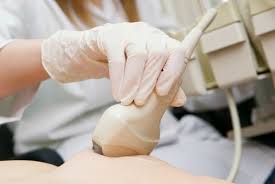Ultrasound vs Mamography
One of the most common cancers in women is breast cancer. According to WHO statistics, approximately half a million women die each year with this diagnosis. Such mortality is due to the fact that more than a quarter of patients learn about their diagnosis when the disease is at the 3rd or 4th stage. At this stage of the disease, treatment is not only very difficult and time-consuming, but is often not effective enough. This is why early diagnosis is so important.
If the examination reveals an early stage of breast cancer, then as a result of treatment the patient's chances of complete cure are very high.
If we speak the language of numbers, 95% of women with the 1st degree of the disease are completely recovered, about 80% with the 2nd stage and a little more than 50% if the 3rd degree of this disease is diagnosed.
This is the reason why regularly, at least once a year, you need to visit a mammologist and undergo an examination. As a rule, an ultrasound or mammography of the breast is appointed.
Types of diagnosis of breast cancer
It should be understood that breast mammography and ultrasound of the mammary glands are different types of diagnostic studies.
In the first case, the mammographer allows you to get the most accurate picture of the state of health of the breast, to identify the smallest seals and neoplasms. Modern digital mammography allows you to accurately diagnose cancer at the earliest stage, thereby ensuring virtually 100% cure.
In the second case, with the help of ultrasound equipment can determine the pathological processes occurring in the patient's breast in real time and detect the presence of neoplasms.
Comparing ultrasound and mammography
Many patients wonder what is better mammography or ultrasound? This is not quite a correct question, since these are radically different diagnostic methods. Ultrasound, despite its high informativeness, some types of breast cancer are not able to be detected. According to statistics, breast cancer on ultrasound is detected in 87% of cases.
If we talk about the high accuracy of the diagnosis, the figure of 98% can give a comprehensive study, when using mammography and ultrasound equipment.
Now let's discuss ultrasound and mammography, differences, advantages and disadvantages.
The procedure of ultrasound studies is painless, safe and does not require from the patient any preliminary preparation. The main advantages of ultrasound:
The exact location of the neoplasm is determined, the study allows you to clarify the stage of the disease, identifies problems with lymph nodes.
With the help of an ultrasound scanner, you can study any part of the breast. On the equipment of the mammography mammography in X-ray can not do this.
Almost with a 100% of the results identify existing cysts in the breast.
Of the minuses of the method of ultrasound examination of the mammary glands should be noted especially:
Low informativeness in those cases when there is a significant amount of fat deposits on the studied area.
If the size of the neoplasm is less than 10 mm, the device may not notice breast cancer ultrasound.
Mammography is a type of radiography, performed on special equipment designed to examine the mammary glands. What mammography shows:
Benign and malignant neoplasms less than 10 mm in size, which can not be done in the process of ultrasound.
Detects a type of cancer such as grade 1 infiltrative ductal cancer.
Characteristic for malignant neoplasms changes that allow you to prescribe or correct the course of treatment.

The disadvantage of mammography can be called the fact that the result of research has to wait for some time. Mammographer in the process of radiography reads the data and transmits them to the system, where according to the program is the classification and processing of information. Modern models of digital mammographs not only give an assessment of the presence or absence of neoplasm and its type. They also determine the cause of appearance, as well as make a preliminary prognosis regarding successful recovery.
Indications for different types of breast cancer diagnosis
Before choosing mammography or ultrasound, familiarize yourself with the information on who these types of diagnostics are indicated for:
Mammography is indicated for patients who show signs of tumor neoplasms after ultrasound. Women who are genetically predisposed to breast cancer. Persons over 40 years of age.
Referral to ultrasound, the doctor gives women under 40 years of age and those to whom mammography is contraindicated. Patients with a suspected tumor larger than 5 mm, as well as persons with suspected cysts in the mammary glands.
Such age restrictions for mammography are explained by the fact that the mammary glands of women under 40 years of age are dominated by glandular tissue, which can interfere with the study and the reliability of diagnostic results.


